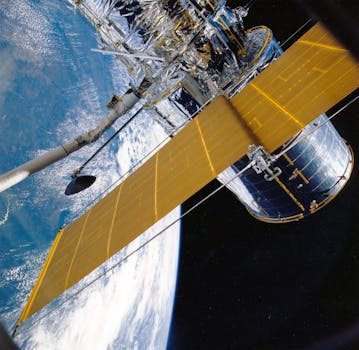
Beyond Earth: How Recent Advances Are Shaping Satellite Telecommunications
Recent advances in satellite telecommunications are revolutionizing the way we communicate beyond Earth’s surface. With the increasing demand for global connectivity, satellite technology has become a vital component of modern communication systems. In this article, we will explore the latest developments and innovations shaping the satellite telecommunications industry.
Introduction to Satellite Telecommunications
Satellite telecommunications involve the use of artificial satellites in orbit around the Earth to transmit and receive signals. This technology has been around for several decades, but recent advances have significantly improved its capabilities and efficiency. Satellite telecommunications offer a wide range of applications, including television broadcasting, telecommunications, weather forecasting, and navigation.
Recent Advances in Satellite Technology
Several recent advances have contributed to the growth and development of satellite telecommunications. One of the most significant advancements is the launch of high-throughput satellites (HTS). HTS offer significantly higher bandwidth and faster data transfer rates than traditional satellites, making them ideal for applications such as broadband internet access and video streaming. Another significant advancement is the development of small satellites, also known as CubeSats. These tiny satellites are smaller, cheaper, and more efficient than traditional satellites, making them an attractive option for a wide range of applications.
Advances in antenna technology have also improved the performance and efficiency of satellite telecommunications. Phased array antennas, for example, allow for more precise control over signal direction and beamforming, enabling higher gain and better signal quality. Additionally, the development of advanced propulsion systems has increased the lifespan and maneuverability of satellites, reducing the need for costly replacement and maintenance.
Impact of Recent Advances on Satellite Telecommunications
The recent advances in satellite technology have had a significant impact on the satellite telecommunications industry. One of the most notable effects is the increased availability and affordability of satellite-based services. With the launch of HTS and small satellites, the cost of satellite-based internet access and other services has decreased, making them more accessible to a wider range of users. This, in turn, has led to an increase in demand for satellite-based services, driving growth and investment in the industry.
The recent advances have also enabled the development of new applications and services, such as satellite-based IoT (Internet of Things) connectivity and satellite-based 5G networks. These innovations have the potential to transform industries such as transportation, agriculture, and healthcare, and are expected to drive significant growth and investment in the satellite telecommunications industry in the coming years.
Conclusion and Future Outlook
In conclusion, recent advances in satellite telecommunications are revolutionizing the way we communicate beyond Earth’s surface. The launch of high-throughput satellites, small satellites, and advances in antenna technology and propulsion systems have improved the performance, efficiency, and affordability of satellite-based services. As the industry continues to evolve, we can expect to see new applications and services emerge, driving growth and investment in the satellite telecommunications industry. With the increasing demand for global connectivity, satellite technology is poised to play a vital role in shaping the future of communication systems.




